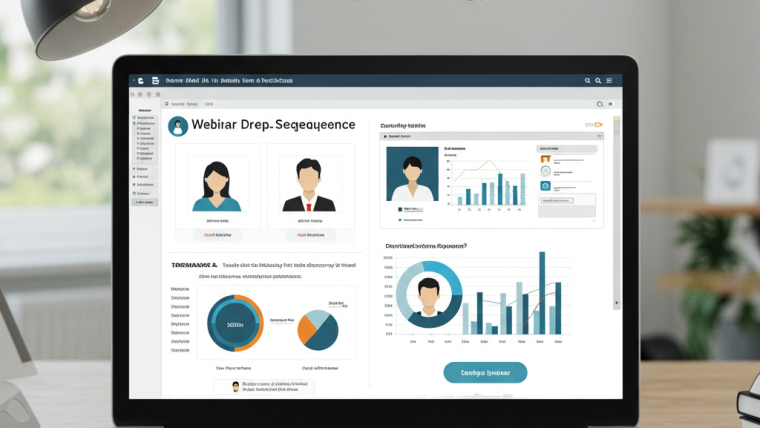Choosing the right platform for your webinar can make or break the success of your event. Whether you’re hosting a product launch, training session, or expert panel, the platform you choose plays a key role in audience experience and engagement. In this guide, we’ll walk you through how to choose the right platform for your webinar so your event runs smoothly and achieves its goals.
Why Picking the Right Webinar Platform Matters
The webinar software is more than a simple broadcast medium. It is the infrastructure for your online event. From the user interface to the audience size, from the interactivity to the tech support—everything matters when it comes to how your message is being sent.
An awkward interface or limited capabilities can be frustrating to participants. Conversely, a friendly, easy-to-use interactive platform that could be relied on would take the experience to a whole new level. That’s why choosing the right one is not just a technical decision — it’s a strategic one.
Understand Your Webinar Goals First
Choose the comparison and reflect on the goal of your webinar before rush into any comparison. So are you hosting a small team training or a massive virtual conference? Is it live interaction you’re after, or are you just looking to reach a broad audience?
Your goals shape your needs. What works for a corporate training may fall short of the needs of a marketing demo meant to reach thousands. You can reduce the number of options by defining your goals and narrowing platforms according to the specific features you need.
Look at Audience Size and Interaction Needs
Some programs are designed for huge crowds but low in interaction; others are for smaller ones, but are loaded with features such as breakout rooms, polls or live Q&A.
If you value audience participation, look for platforms that provide chat, reaction emojis, hand-raising and a polling feature. And for large groups, make sure the platform is capable of handling large audiences without any performance hiccups.
Also, don’t forget that certain platforms bill by the number of attendees. Ensure that price point is in line with your anticipated turnout.
Device Compatibility Is a Must
Not everyone is on the same devices or browsing experiences. The ideal webinar platform must function seamlessly on desktops, tablets, and mobile devices. Ensure that it’s compatible with various operating systems(Windows, Mac, iOS, Android) without difficult downloads or configurations.
Online platforms like those being offered by browsers are good for minimizing technical problems and ensuring a smooth user experience from start to finish. This can be really useful for those who are not tech-savvy.
Focus on Ease of Use
Both hosts and attendees should find the platform simple to use. Complicated interfaces lead to confusion and wasted time. The ideal webinar platform has clear controls for screen sharing, muting, starting/stopping video, and managing participants.
Look for platforms with a short learning curve. You shouldn’t need hours of training just to run a single event. A few test runs should be enough to feel confident operating the platform.
Consider Branding and Customization
Your brand identity should carry through every part of your webinar. Platforms that allow you to add your logo, brand colors, and custom landing pages can help you maintain a professional look.
Some tools also let you customize registration pages, reminder emails, and follow-ups. These small touches add up and help build trust with your audience.
Technical Support and Reliability
Even with preparation, things can go wrong during live events. That’s why technical support is critical. Choose a platform that offers live support during your webinars—preferably with real-time chat or phone assistance.
Check uptime history, user reviews, and platform reputation for reliability. A few seconds of downtime during a webinar can cause frustration and loss of audience interest.
Recording and Replay Features
Your webinar doesn’t end when the live session ends. Many attendees may want to watch the replay. A good platform should allow automatic recording, easy storage, and simple sharing options.
Check whether the recordings include chat history, polls, or Q&A. Some platforms even allow minor editing or trimming of the recording before publishing it.
Integration with Other Tools
Webinar platforms should integrate well with your existing tools—like CRM software, email marketing tools, or analytics platforms. These integrations help you automate follow-ups, track user behavior, and manage leads more effectively.
If you already use platforms like HubSpot, Salesforce, or Mailchimp, look for webinar tools that offer direct integration.
Test Before You Commit
Most webinar platforms offer free trials or demo versions. Use this time to test functionality, check audio/video quality, explore backend settings, and even run a test webinar with colleagues.
Make a checklist of your must-have features and see how well each platform performs in real-time. A hands-on test is the best way to understand usability and performance.
Popular Webinar Platforms Worth Exploring
While we won’t dive deep into lists, it’s worth mentioning that some commonly used platforms include Zoom, Webex, GoTo Webinar, Demio, Livestorm, and Microsoft Teams. Each has its pros and cons depending on your goals, budget, and audience type.
But instead of picking a platform just because it’s popular, match its features with your actual needs. That’s how to choose the right platform for your webinar wisely.
Don’t Forget Security and Privacy
Webinars often involve data collection—emails, names, sometimes payment information. Ensure the platform complies with data protection laws like GDPR. Also, look for features like waiting rooms, password protection, and host controls to maintain event security.
Uninvited attendees or hacked sessions can ruin your event. Security should be a core part of your platform selection checklist.
Budget Considerations
Pricing can vary a lot—from free basic plans to high-end enterprise packages. Some charge per host, some per attendee, and others offer flat-rate pricing. Understand what’s included in the price. Hidden fees for recordings, add-ons, or extra users can inflate your budget.
Balance cost with functionality. Paying a bit more for a reliable platform with strong support and must-have features is usually worth it in the long run.
Conclusion
When it comes to how to choose the right platform for your webinar, there’s no one-size-fits-all answer. Your decision should be driven by your goals, audience size, interaction needs, and technical comfort.
The key is to test, evaluate, and choose a webinar platform that delivers reliability, ease of use, and the specific tools you need for a smooth, engaging experience. Don’t settle for the first option that looks good—make an informed choice to maximize your webinar’s success.
If your goal is to generate B2B leads, selecting the right webinar platform can make a big difference.








Webinar Analytics: A Complete Guide to Measuring Success and Improving Performance
The Ultimate Webinar Follow-Up Strategy to Turn Attendees into Customers
Webinar Accessibility Best Practices: How to Make Your Online Events Inclusive for All
Webinar Personalization: Tailoring Content to Audience Segments for Maximum Engagement